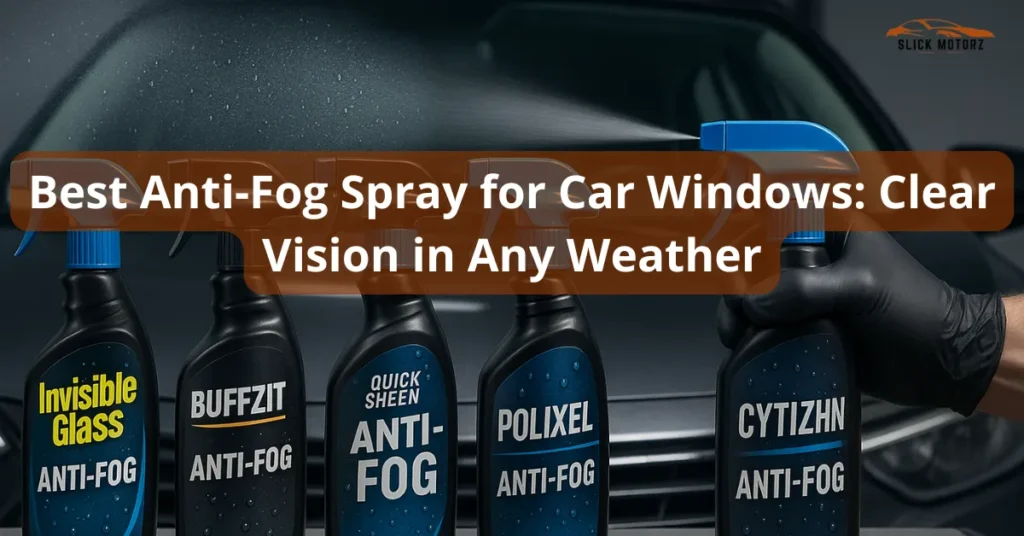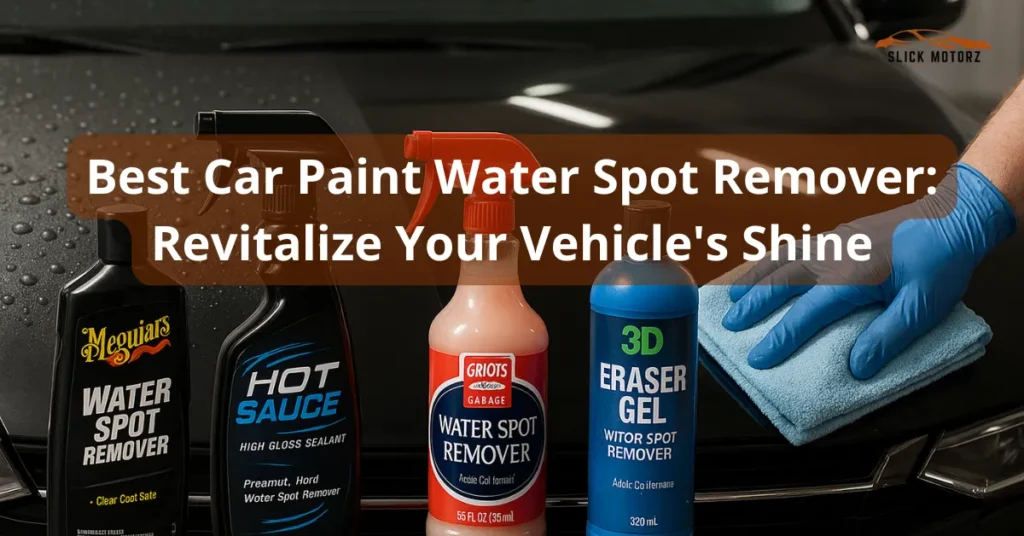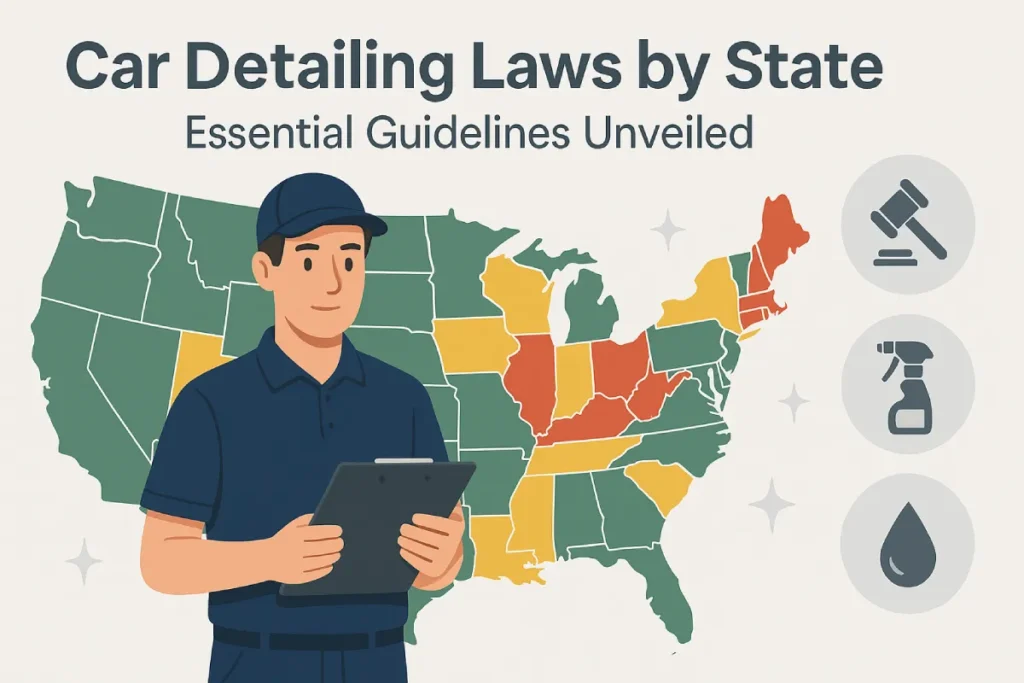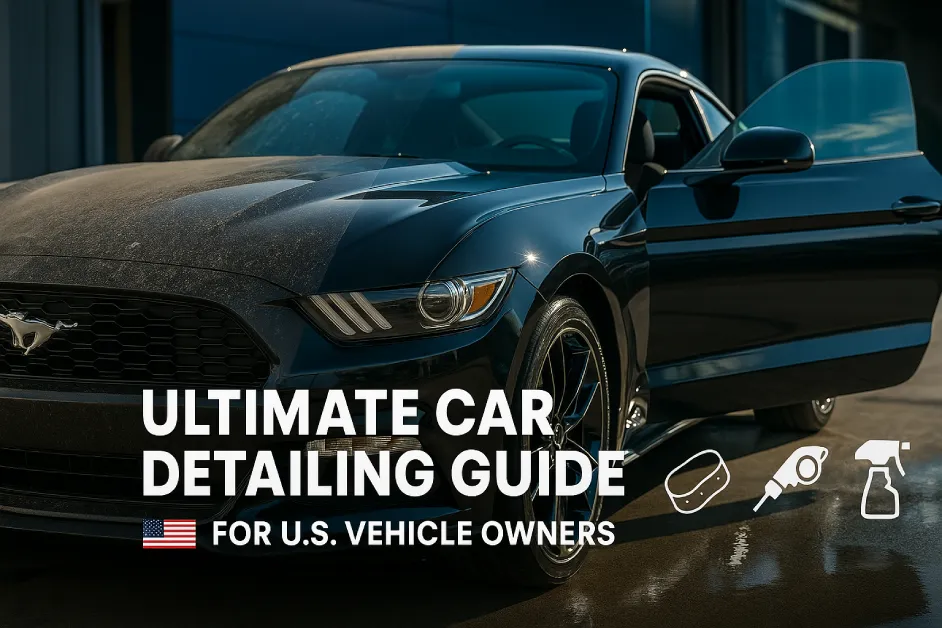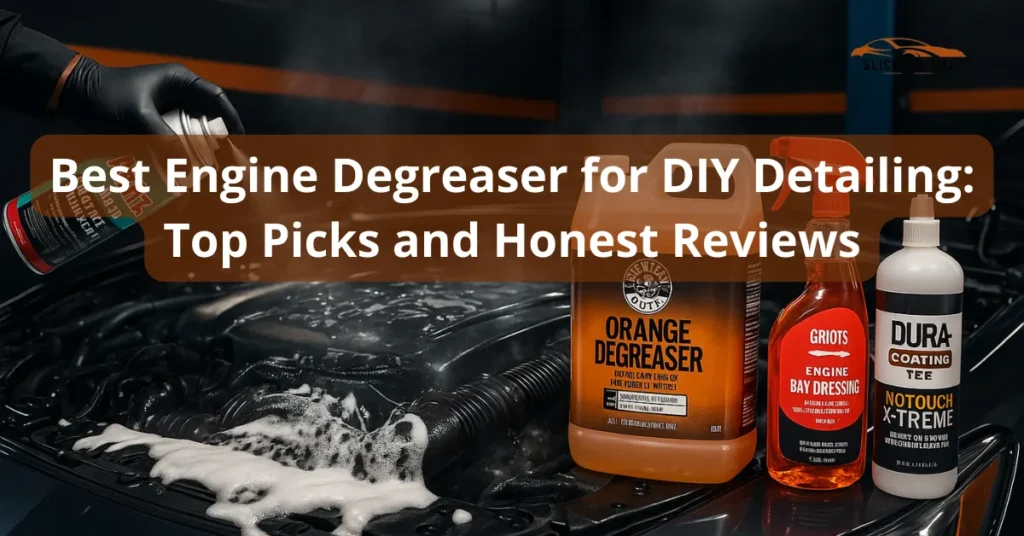Imagine driving down the street in a car that shines like it’s brand new, turning heads wherever you go. That’s the magic of proper exterior car detailing.
You don’t need to be a professional to achieve that showroom finish; you just need the right tools and techniques. This guide is designed for you, the car enthusiast who wants to elevate their vehicle’s appearance without breaking the bank or spending hours on end.
In this article, we have covered a basic exterior car detailing guide, from the essential products to step-by-step instructions that ensure you do it right. You’ll learn tips and tricks that not only enhance your car’s aesthetics but also help maintain its value. Ready to transform your ride and boost your pride? Dive in, and discover how easy it can be to make your car stand out in the crowd.
Importance Of Exterior Detailing
Exterior detailing is crucial for maintaining your car’s appearance. It preserves the car’s value and extends its lifespan. Regular detailing helps prevent rust and damage caused by dirt. A clean car also boosts your pride and confidence.
Without proper care, your vehicle can suffer significant damage. Paint can fade. Scratches may appear. Dirt and grime can accumulate. These issues can lead to expensive repairs. Exterior detailing ensures your car stays in top condition.
Improves Aesthetic Appeal
A well-detailed car looks stunning. It attracts attention on the road. Shiny surfaces reflect your care and attention. Clean windows provide clear views. This enhances your driving experience.
Protects Paint And Finish
Detailing shields your car’s paint from elements. Waxing forms a protective layer. It prevents sun damage and fading. Dirt and grime are easier to clean. This keeps your car looking new.
Enhances Resale Value
A clean car sells faster. Buyers prefer cars in good condition. Regular detailing keeps the car market-ready. It shows the car was well-maintained. This can lead to a better sale price.
Prevents Damage And Corrosion
Detailing removes harmful substances. Salt, mud, and pollution can cause corrosion. Regular cleaning stops this. It protects your car’s body from damage. This saves you money over time.
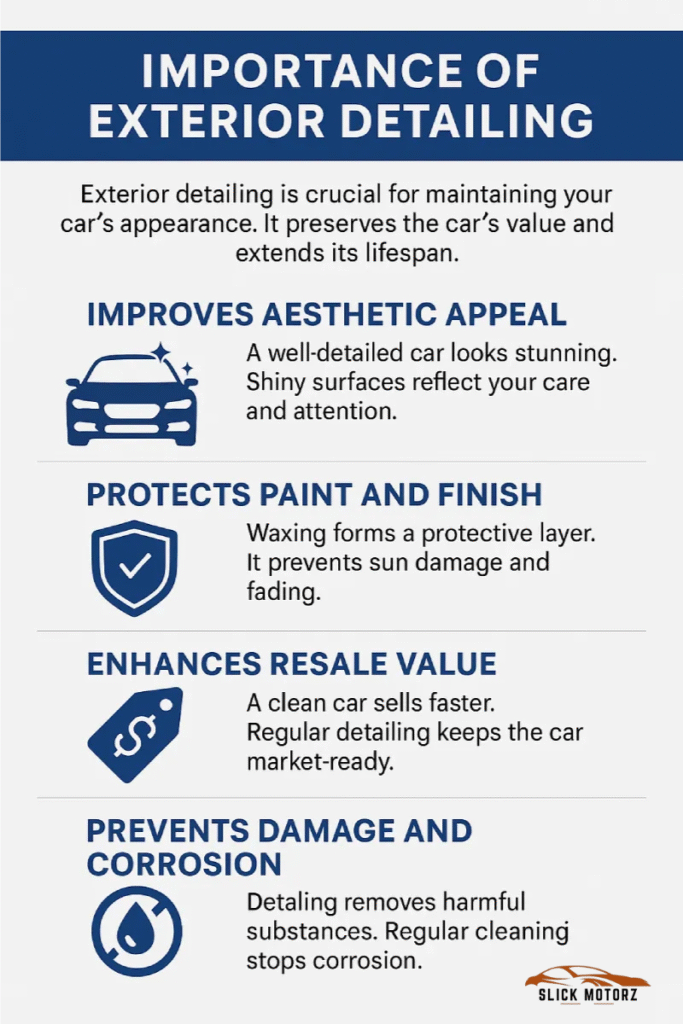
Initial Assessment
Starting your exterior car detailing journey with a thorough initial assessment is crucial. Understanding your car’s current state helps you prioritize tasks and avoid unnecessary work. It’s about knowing what you’re dealing with before diving into the cleaning process.
Inspecting The Car’s Condition
Begin by taking a walk around your vehicle. Observe the paintwork, windows, wheels, and trim. Are there scratches, water spots, or stains? Check under different lighting conditions. Sometimes, blemishes hide in shadows, waiting to surprise you later.
Don’t rush this step. You want a clear picture of what needs attention. If you spot dullness or discoloration, it might be time for a polish. Have a notebook handy to jot down specific issues you notice. This will guide your detailing plan.
Identifying Problem Areas
Problem areas can vary from car to car. Look out for bird droppings, sap, or tar. These stubborn spots often require special products. If you have experience, you know not all grime is equal. Some stains need a bit more elbow grease.
Think about your previous detailing experiences. Did certain areas take longer to clean? Maybe the bumper or side mirrors were tricky? Use this insight to anticipate challenges. It helps to prepare the right tools for these tough spots.
What’s your most persistent problem area? Identifying it now can save you time and effort later. Remember, detailing is not just about cleaning; it’s about making your car look its best.
Reflect on what you see. This initial assessment sets the foundation for a successful exterior detailing session. Are you ready to make your car shine?
Essential Tools For Detailing
For exterior car detailing, a few essential tools are key. Microfiber towels and quality car wash soap ensure a spotless finish. Invest in a good foam cannon for even soap distribution.
To get started with exterior car detailing, the right tools are essential. Having the proper equipment ensures you achieve a professional finish. Let’s dive into the must-have tools that make detailing effective and efficient.
Cleaning Tools
A good wash mitt is essential for cleaning your car. It helps remove dirt without scratching the paint. Use a two-bucket system. One for soapy water, the other for rinsing. This reduces swirl marks. A microfiber towel is crucial for drying. It absorbs water fast and leaves no streaks. A tire brush is handy for cleaning wheel rims. It reaches tight spaces and removes grime effectively.
Polishing Equipment
A dual-action polisher is great for removing minor scratches. It helps in applying polish evenly. You will also need foam pads. They work well with polishers for a smooth application. Remember, using the right pad for the right job is key. Keep a few microfiber cloths handy. They’re perfect for wiping off excess polish. These tools ensure your car shines brilliantly.
Protective Gear
Safety is important during detailing. Always wear gloves to protect your hands. They prevent skin irritation from chemicals. Safety goggles are a must when using polishers. They protect your eyes from debris. Wearing a mask helps if you’re sensitive to dust or fumes. Comfortable clothing is advisable. It allows you to move freely while working on your car.
Washing Techniques
Washing your car is more than a simple spray and wipe. Proper techniques ensure a clean and protected exterior. By using the right methods, you can maintain your car’s shine. Let’s explore some essential washing techniques.
Pre-wash Preparation
Start with a shaded area. Direct sunlight can cause soap to dry too fast. Gather your supplies: a hose, car shampoo, and microfiber cloths. Rinse the car to remove loose dirt. This prevents scratches during washing. Check for stubborn spots and treat them with a pre-wash spray.
Two-bucket Method
The two-bucket method is a must for safe washing. Use one bucket for soapy water and another for rinsing. Dip your wash mitt in the soapy bucket. Clean a section of your car. Rinse the mitt in the second bucket. This removes dirt and prevents scratches. Repeat until the car is clean.
Drying The Vehicle
Drying prevents water spots. Use a soft microfiber towel. Start from the top of the car. Move downwards to avoid streaks. Pat the surface gently instead of wiping. This reduces the risk of scratches. Ensure all areas are dry, including mirrors and door handles.
Paint Decontamination
Paint decontamination is a crucial step in exterior car detailing that ensures your vehicle’s paintwork remains vibrant and smooth. Over time, your car’s paint collects various contaminants like tar, sap, and industrial fallout. These impurities can dull the paint and make it rough to the touch. Proper decontamination not only enhances the look of your car but also prepares it for further detailing steps. Let’s dive into some effective methods to achieve flawless paint decontamination.
Using Clay Bars
Clay bars are a popular tool in the detailing world, and for a good reason. They effectively remove surface contaminants embedded in the paint, which regular washing can’t eliminate. Imagine gliding your hand over your car’s surface and feeling it as smooth as glass. That’s the magic of clay bars. To use them, lubricate the area with a clay lubricant and gently glide the bar over the surface. You’ll feel the difference almost immediately. Have you ever noticed how a freshly clayed surface gleams under sunlight? That’s the result of removing all those pesky contaminants.
Iron Removers
Iron removers are a game-changer for tackling iron particles that cling stubbornly to your car’s paint. These particles come from brake dust or rail dust, often invisible to the naked eye. Spray the iron remover on the paint, and watch as it reacts, turning purple as it dissolves the iron. It’s like witnessing a mini science experiment on your car. This step is particularly crucial if you often park near train tracks or industrial areas. Have you ever wondered why your car’s paint doesn’t shine as it used to? Iron particles might be the hidden culprits.
Paint decontamination is more than just an extra step in car detailing. It’s about maintaining the beauty and integrity of your vehicle’s exterior. By using clay bars and iron removers, you ensure your paint is free from harmful contaminants. So next time you detail your car, think about the invisible elements clinging to your paint and take action. Your car deserves to look its best.
Polishing And Buffing
Polishing and buffing enhance a car’s exterior by removing scratches and giving a glossy finish. Essential tools include a polish, buffing pad, and orbital buffer. Start by cleaning the surface, apply polish, and use the buffer in circular motions for a smooth shine.
Polishing and buffing are crucial steps in exterior car detailing that can transform your vehicle’s appearance. These processes help in removing imperfections, restoring shine, and maintaining the paintwork. If you’ve ever wondered why some cars have that eye-catching gleam, it often comes down to effective polishing and buffing. Let’s dive into the basics and ensure you’re equipped with the right knowledge and tools to do it right.
Types Of Polish
Different polishes serve different purposes. Compound polish is more abrasive and perfect for removing deep scratches or oxidized paint. It’s ideal if your car’s surface feels rough to the touch. Finishing polish is less abrasive and used for enhancing the shine and removing light imperfections. It’s the go-to choice for maintaining a car’s glossy finish. All-in-one polish combines cleaning, polishing, and protection in one product. It’s convenient but may not be as effective for severe imperfections. When selecting a polish, consider your car’s current condition and desired outcome. A weekend spent using the wrong polish can lead to frustration and, worse, damage.
Using A Buffer
A buffer is a powerful tool for achieving a professional finish. It saves time and effort compared to hand polishing. Before using a buffer, ensure the car is clean to avoid trapping dirt between the pad and paint. This prevents unwanted scratches. Start with a dual-action buffer if you’re a beginner. It’s user-friendly and reduces the risk of damaging the paint. Apply a small amount of polish to the buffer pad. Spread it evenly across the surface before turning on the buffer. Always keep the buffer moving to avoid burning the paint. Work in small sections and check your progress frequently. Remember, practice makes perfect. Even if your first attempt isn’t flawless, you’re on the path to mastering the art of buffing. Are you ready to see your car shine like never before?
Protective Coatings
Protective coatings are the secret weapon for keeping your car’s exterior gleaming and shielded from the elements. Whether you’re a weekend warrior or a detailing novice, understanding these coatings can transform your car care routine. You may have heard the buzz about ceramic coatings and wondered if they’re worth the hype. Let’s break it down and explore the essentials of protective coatings.
Sealants Vs. Waxes
Both sealants and waxes offer a layer of protection, but they serve different purposes. Sealants are synthetic and provide long-lasting protection against UV rays and contaminants. They bond tightly to the car’s surface, making them a top choice for durability.
Waxes, on the other hand, are natural and enhance your car’s shine, giving it a warm glow. They are easier to apply but may not last as long as sealants. Think about your lifestyle and how often you’re willing to reapply. Which one aligns better with your needs?
Applying Ceramic Coatings
Ceramic coatings are the new frontier in car detailing, offering superior protection and a stunning finish. They create a hard shell that guards against scratches, dirt, and even chemical stains. But applying them requires precision and patience.
You’ll need a clean, dry surface and a steady hand. Start with small sections and ensure even coverage. The results are worth the effort, providing a mirror-like finish that turns heads. Have you ever seen a car so shiny that it seems new, even years later? That’s the magic of ceramic coatings.
Remember, protective coatings are an investment in your car’s appearance and longevity. Embrace the process, and don’t be afraid to experiment with different products. What’s your go-to method for keeping your car looking its best?
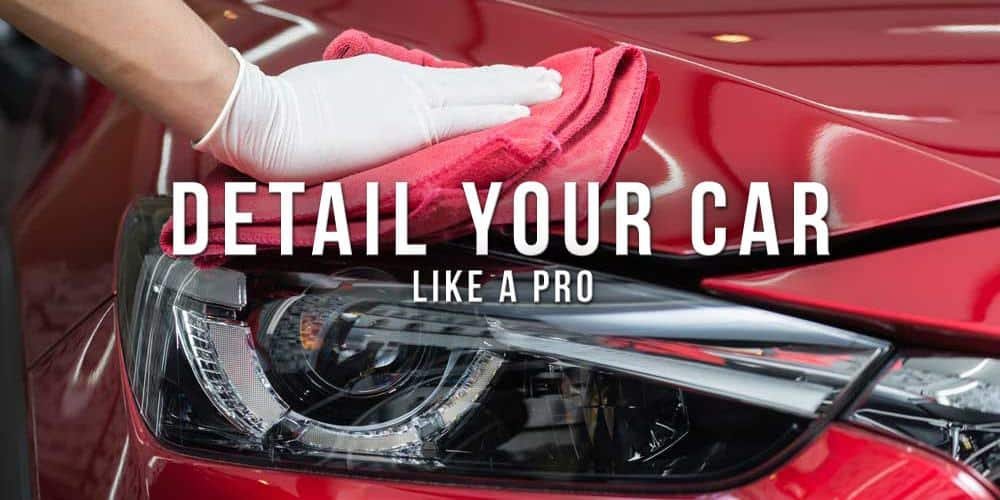
Credit: avalonking.com
Detailing The Exterior Trim
Achieving a polished look involves careful cleaning of the exterior trim. Use mild soap and soft brushes to remove dirt and grime. Finish with a protective sealant to keep the trim shiny and weather-resistant.
Detailing the exterior trim of your car can make a significant difference in its overall appearance. The trim is often overlooked, yet it plays a vital role in giving your vehicle a polished, well-maintained look. Whether it’s the plastic, rubber, or metal components, paying attention to these details can elevate your car’s aesthetics.
Restoring Plastic And Rubber
Plastic and rubber trims can fade and crack over time, leaving your car looking older than it is. A few years ago, I noticed my car’s plastic trim had become a dull gray. I tried a trim restorer product, and the results were astonishing. To restore your plastic and rubber trims, you’ll need a dedicated trim restorer or conditioner. Clean the area first to remove any dirt or grime. Then, apply the restorer evenly using a microfiber cloth or applicator pad. Allow the product to penetrate the material, often for a few minutes, before buffing away any excess. This not only rejuvenates the color but also adds a protective layer against UV damage. Have you noticed any fading on your car’s trim?
Metal Trim Polishing
Metal trims can lose their shine due to exposure to the elements. Polishing them can bring back that mirror-like finish that catches the eye. A few months back, I polished the chrome trim on my car, and it was like looking at a brand-new piece. To polish metal trim, you’ll need a high-quality metal polish and a soft cloth. Start by cleaning the trim to remove dirt and residue. Apply a small amount of polish to the cloth and rub it onto the metal in small, circular motions. Focus on one section at a time to ensure even coverage. Once you’re done, buff the metal with a clean cloth to remove any remaining polish and reveal the shine. Can you imagine the difference this simple step could make to your car’s appearance? Investing a little time in detailing your car’s exterior trim can make a world of difference. It’s about taking pride in what you drive and ensuring every part of it looks its best. Are you ready to give your car’s trim the attention it deserves?
Glass And Mirror Cleaning
Keeping car windows and mirrors spotless enhances visibility and safety. Use a microfiber cloth to avoid streaks. Clean in circular motions for a clear, polished look.
Cleaning your car’s glass and mirrors might seem straightforward, but achieving a crystal-clear finish requires a bit more than a quick wipe-down. Proper glass and mirror cleaning enhances not only the aesthetic appeal of your vehicle but also your safety on the road. Imagine a world where every drive offers perfect visibility, free from streaks and smudges—this can be your reality with the right techniques.
Streak-free Techniques
Achieving streak-free windows and mirrors is the holy grail of car detailing. The key lies in the tools and products you choose. Use a high-quality microfiber cloth, as it is designed to trap dirt and moisture without leaving lint behind. Avoid cleaning your car’s glass in direct sunlight. The heat can cause the cleaning solution to dry too quickly, leading to streaks. Instead, opt for a shaded area or clean during the early morning or late afternoon. Choose a dedicated glass cleaner for the best results. Spray the cleaner onto the cloth, not directly onto the glass, to prevent overspray on other surfaces. Wipe using a circular motion followed by a vertical stroke to ensure no streaks are left behind.
Using Glass Sealants
Glass sealants can be a game-changer for maintaining your car’s windows and mirrors. They create a protective layer that repels water and dirt, making future cleaning much easier. Have you ever noticed how raindrops bead up and roll off some car windows more efficiently than others? That’s the magic of a good glass sealant. Applying a glass sealant is simple. First, ensure the glass is thoroughly cleaned and dry. Apply a small amount of sealant onto a microfiber applicator pad and spread it evenly across the surface. Allow it to cure for the recommended time before buffing it off with a clean microfiber cloth. You’ll notice improved clarity and reduced need for frequent cleaning. Have you ever struggled with foggy windows in the morning? A quality glass sealant can help reduce fogging, giving you clearer vision as you start your day. Which of these techniques will you try first to enhance your driving experience? Glass and mirror cleaning may seem like a small detail, but it has a big impact on your safety and satisfaction on the road. Take a few extra minutes to perfect this aspect of car detailing, and enjoy a clearer view every time you drive.
Tire And Wheel Care
Proper tire and wheel care ensures a smooth ride. Start by cleaning tires with a mild soap and water mixture. Use a soft brush to remove dirt and brake dust, keeping wheels shiny and protected. Regular checks prevent wear and enhance safety on the road.
Caring for your tires and wheels is crucial in exterior car detailing. It’s not just about making your car look great; it’s about ensuring safety and longevity. Well-maintained tires and wheels can improve your car’s performance and provide a smoother ride. Let’s dive into the essentials of tire and wheel care to keep your car rolling in top shape.
Cleaning Methods
Cleaning your tires and wheels requires the right approach. Start by using a high-quality wheel cleaner, which is designed to break down brake dust and road grime. Spray the cleaner generously and let it sit for a few minutes before scrubbing with a soft-bristle brush. A personal tip: pay extra attention to hard-to-reach areas where dirt tends to accumulate. Rinse thoroughly with water to prevent any cleaner residue from remaining. When cleaning, always work from the top of the tire down to avoid streaks. Remember to use a separate cleaning cloth or brush for the wheels to prevent scratching. Have you ever noticed how often the wheels are neglected during a car wash? Make sure not to skip them; they’re more important than you might think.
Tire Dressing Options
Tire dressing isn’t just for aesthetics; it also protects the rubber from cracking and fading. There are various options available, including water-based and solvent-based dressings. Water-based dressings are environmentally friendly and provide a natural finish. Solvent-based dressings, on the other hand, offer a glossy look and are more durable. Consider the look you want and how often you’re willing to reapply the dressing. Have you tried both types before? You might find that one suits your preferences better. Apply the dressing evenly with an applicator pad, being careful not to get any on the tread. This will help maintain traction and ensure your safety on the road. Taking good care of your tires and wheels is more than just a step in detailing; it’s a commitment to your car’s overall health. What techniques have you found effective in tire and wheel care? Share your thoughts in the comments!
Maintaining The Detailing
Maintaining the detailing of your car is vital for its appearance. Proper care ensures your vehicle looks fresh and clean. Regular upkeep can extend the life of your car’s exterior. By following simple steps, you can preserve the shine and beauty. This guide will help you maintain your car’s detailing with ease.
Regular Cleaning Schedule
Stick to a regular cleaning schedule for your car. This prevents dirt and grime from building up. Wash your car every two weeks. Use a gentle car shampoo and soft sponge. Rinse thoroughly to avoid soap residue. Dry with a microfiber towel to prevent water spots.
Pay attention to the wheels and tires. They collect brake dust and dirt quickly. Clean them with a separate cloth and cleaner. A regular schedule keeps your car looking its best.
Seasonal Protection
Different seasons bring various challenges for your car’s exterior. In summer, UV rays can damage paint. Apply a high-quality wax for protection. It creates a barrier against the sun. In winter, road salt can cause rust. Rinse your car often and apply a protective sealant.
Springtime means pollen and rain. A good wax job can help repel water and dirt. For autumn, clear fallen leaves from the car. They can stain the paint if left too long. By adjusting care for each season, you ensure lasting beauty for your car.
Download Ultimate Exterior Car Detailing Checklist for a showroom shine — keep your car protected, polished, and looking brand new all year round
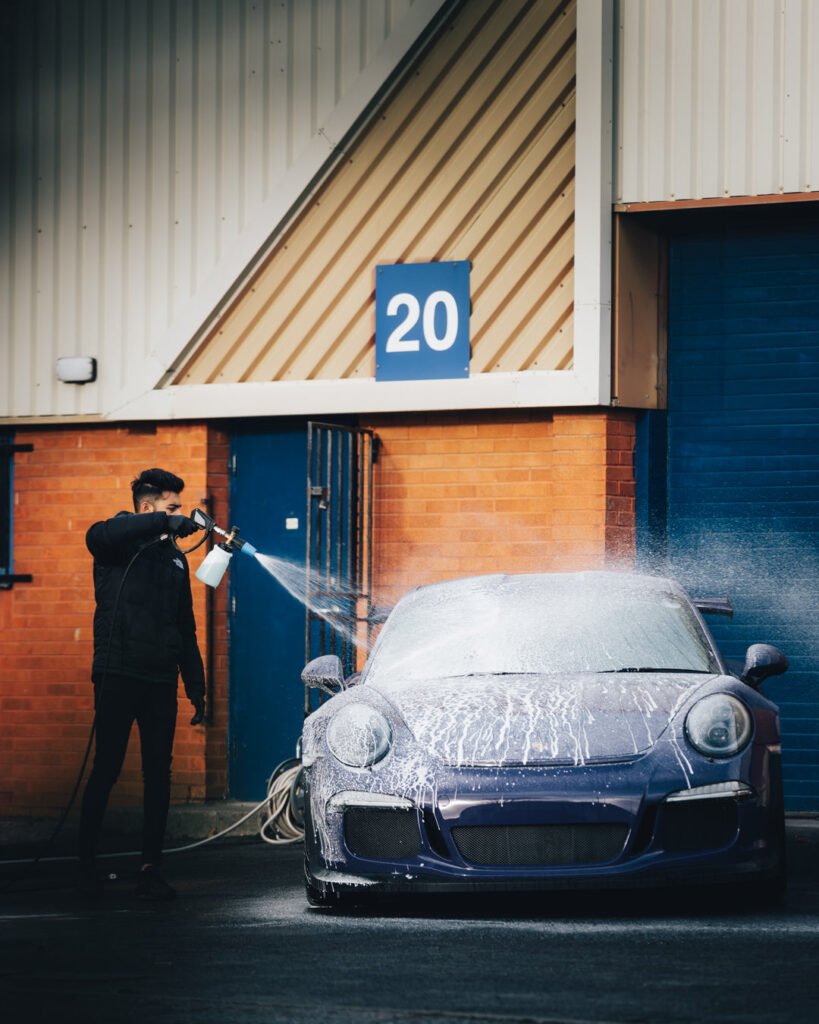
Credit: www.mycarcleaning.co.uk
Frequently Asked Questions
What Is Exterior Car Detailing?
Exterior car detailing involves thoroughly cleaning and restoring a vehicle’s outside. It includes washing, polishing, and waxing to enhance appearance. Detailing helps protect paint and other surfaces from damage. This process can improve the car’s resale value and prolong its lifespan.
How Often Should You Detail Your Car?
Detailing your car every three to six months is ideal. Frequency depends on factors like weather conditions and usage. Regular maintenance ensures your vehicle remains in top condition, protecting it from environmental damage. Consistent detailing helps maintain the car’s aesthetic appeal and resale value.
What Tools Are Needed For Car Detailing?
Basic car detailing tools include microfiber cloths, sponges, and brushes. A high-quality car shampoo, wax, and polish are essential. Additionally, consider investing in a clay bar and a dual-action polisher for better results. These tools help achieve a professional-level finish.
Can Car Detailing Remove Scratches?
Car detailing can minimize minor scratches and swirl marks. Using polish and a dual-action polisher can improve the appearance. However, deep scratches may require professional repair. Regular detailing helps prevent further damage and maintains the vehicle’s exterior finish.
Conclusion
Exterior car detailing keeps your car looking great. Essential tools and techniques make the process smooth. Cleaners, waxes, and microfiber cloths are crucial. Regular detailing prevents damage. It also boosts your car’s value. Spend time cleaning and protecting surfaces.
Follow simple steps for shiny results. Practice leads to improvement. Enjoy the satisfaction of a well-detailed car. Your vehicle deserves attention and care. Make detailing a routine. Drive proudly with a clean exterior.









